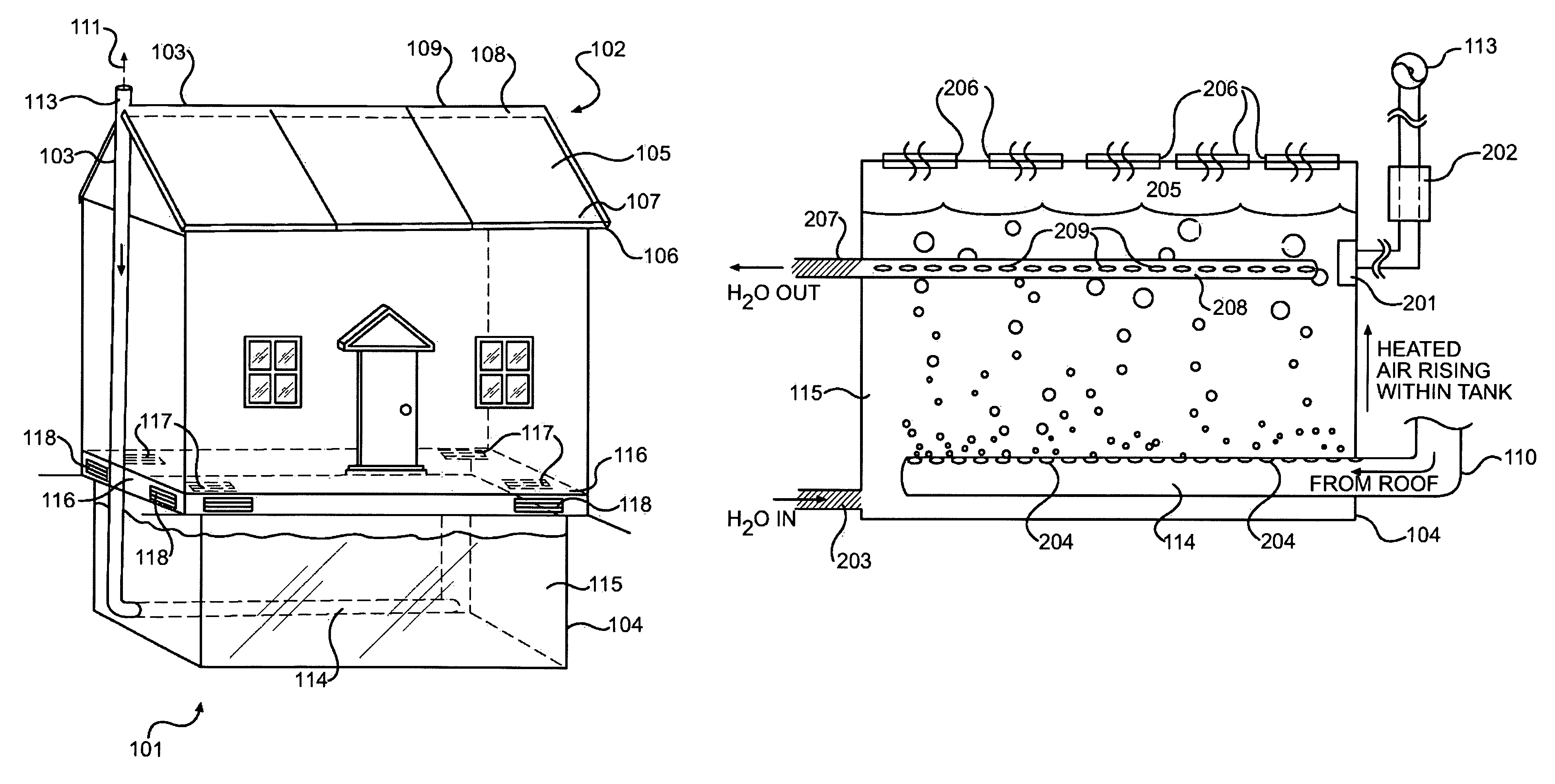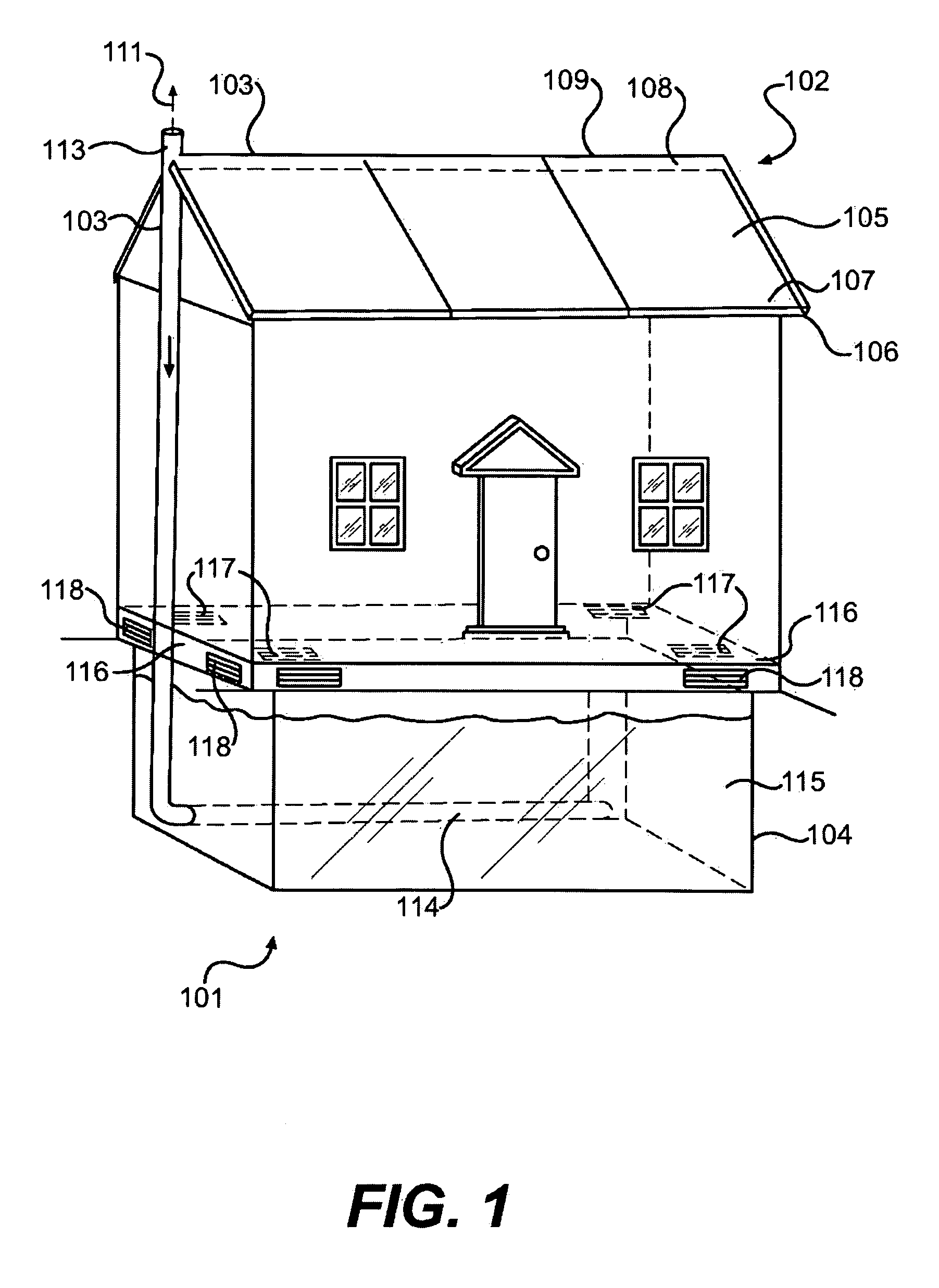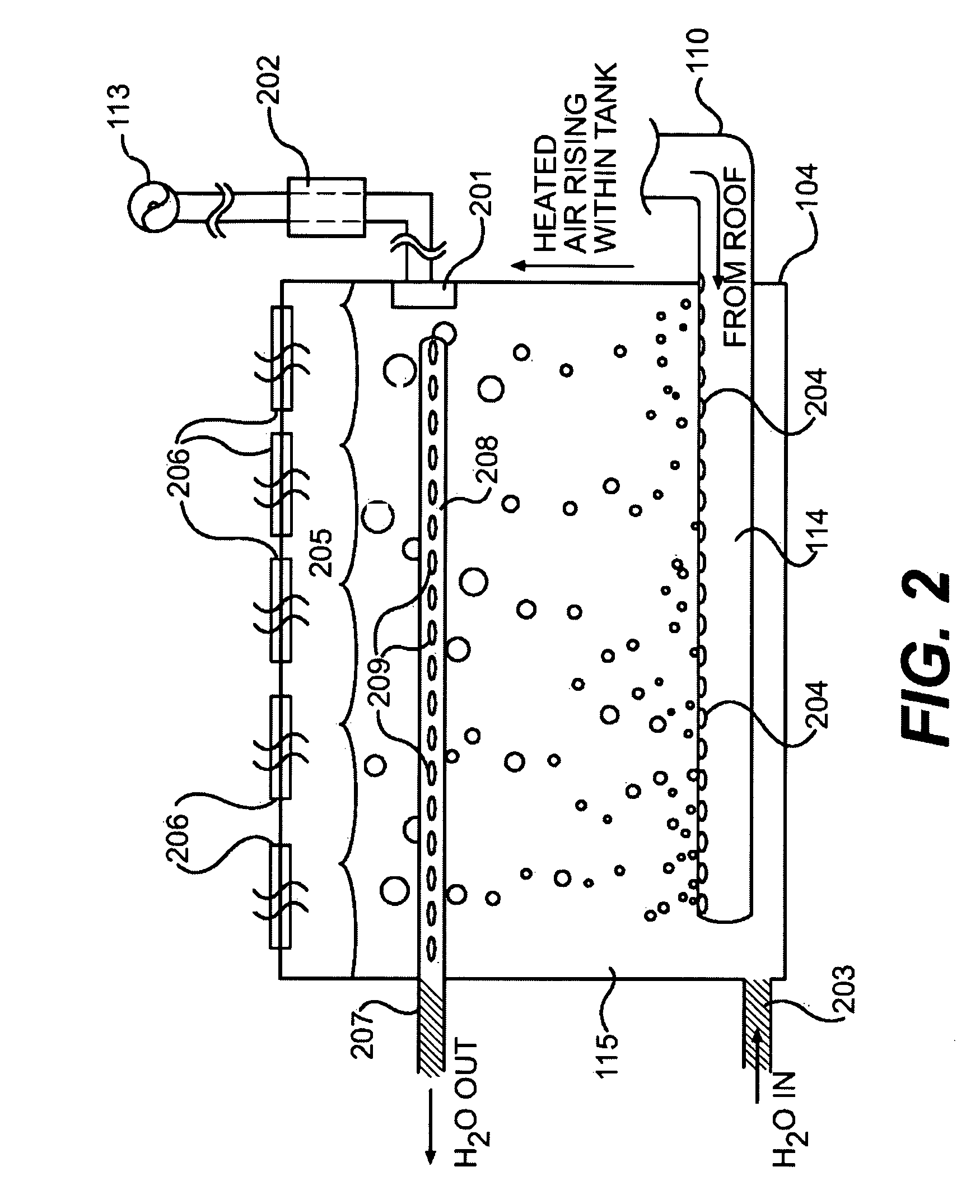Method and device for capture, storage and recirculation of heat energy
a heat energy and heat storage technology, applied in the field of heat energy capture, storage and recirculation, can solve the problems of system inherently inefficient, system prone to structural damage, costly repairs, etc., and achieve the effects of high heat capacity, easy availability, and increased water temperatur
- Summary
- Abstract
- Description
- Claims
- Application Information
AI Technical Summary
Benefits of technology
Problems solved by technology
Method used
Image
Examples
Embodiment Construction
[0032]Referring to FIG. 1 of the drawings, a heat storage system 101 comprising a rooftop heat generation and collection apparatus 102, heated air transport apparatus 103, and heat storage tank 104 is shown as incorporated into a building. The rooftop heat generation and collection apparatus 102 comprises roof panels 105 which are located above the surface of the roof 106. The roof panels 105 are substantially transparent and while various materials may be utilized for the roof panels 105, it is preferred that lightweight transparent or semi-transparent materials, such as Plexiglas® and the like, form the basis for the roof panels 105. The surface of the roof 106 is preferentially colored or coated with a non-reflective and / or black surface. In one such embodiment, heavy-gauge black plastic is used as a roof covering. It is also preferable that the spaces located underneath the roof structure are insulated; commonly available insulation materials may be utilized to insulate the stru...
PUM
 Login to View More
Login to View More Abstract
Description
Claims
Application Information
 Login to View More
Login to View More - R&D
- Intellectual Property
- Life Sciences
- Materials
- Tech Scout
- Unparalleled Data Quality
- Higher Quality Content
- 60% Fewer Hallucinations
Browse by: Latest US Patents, China's latest patents, Technical Efficacy Thesaurus, Application Domain, Technology Topic, Popular Technical Reports.
© 2025 PatSnap. All rights reserved.Legal|Privacy policy|Modern Slavery Act Transparency Statement|Sitemap|About US| Contact US: help@patsnap.com



